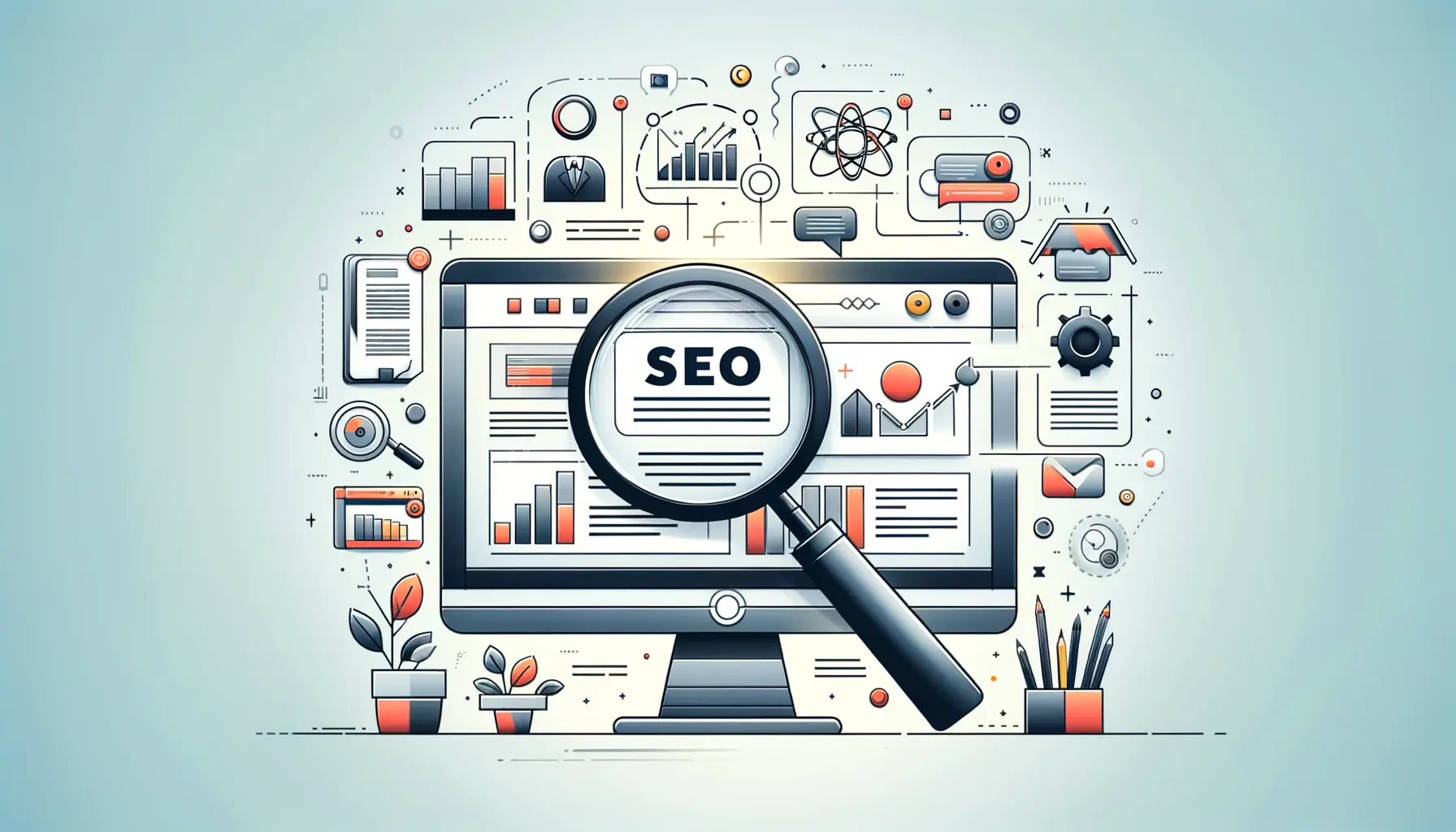The digital landscape is evolving, and with it, the strategies for marketing software as a service (SaaS) are also transforming.
Content marketing and search engine optimization (SEO) have emerged as pivotal elements in the promotional mix for SaaS companies.
These strategies not only help in attracting a targeted audience but also in converting them into loyal customers.
The synergy between content marketing and SEO is particularly crucial for SaaS businesses, as it leverages valuable content to improve online visibility and search rankings, thereby driving more qualified traffic to their websites.
Understanding the nuances of how content can be optimized for search engines while still providing immense value to the audience is key.
This involves a strategic approach to content creation, where the main keyword, “content,” plays a central role.
By focusing on this keyword within the context of SEO for SaaS companies, businesses can craft content that resonates with their audience’s needs and search behaviors.
This article aims to explore the intricate relationship between content marketing and SEO for SaaS businesses, offering insights into how to effectively use content to boost online presence and engagement.
- Understanding the Basics of SaaS SEO
- Creating Compelling Content for SaaS
- Link Building Strategies for SaaS SEO
- SEO Analytics and Performance Tracking
- Optimizing Website Structure for SaaS SEO
- Local SEO Strategies for Global SaaS Companies
- Future Trends in SaaS SEO and Content Marketing
- Seizing the Future of SaaS Marketing: A Convergence of Content and SEO
- FAQs on Content Marketing and SEO for SaaS Businesses
Understanding the Basics of SaaS SEO
Before diving deep into the strategies, it’s essential to grasp the basics of SEO in the context of SaaS businesses.
SEO for SaaS involves optimizing your website and content to rank higher in search engine results pages (SERPs) for keywords relevant to your software products and services.
This is crucial because higher visibility in SERPs leads to more organic traffic, which can translate into more sign-ups and conversions for your SaaS business.
The foundation of a strong SEO strategy for SaaS companies lies in thorough keyword research.
Identifying the right keywords—terms and phrases that potential customers use to find solutions like yours—is the first step.
This research not only informs the content creation process but also guides the optimization of website elements like meta tags, headers, and URLs, ensuring they are search-engine friendly and aligned with user search intent.
Keyword Research for SaaS
Keyword research in the SaaS industry requires a deep understanding of the market, the competition, and the specific problems that the software solves.
Tools like Google Keyword Planner and SEMrush can help identify high-value keywords that are relevant to your target audience.
However, the goal isn’t just to find the most searched terms but to uncover those that indicate a strong intent to subscribe to a SaaS solution.
Once the right keywords are identified, incorporating them naturally into your content becomes crucial.
This not only helps in ranking for those keywords but also ensures that the content is valuable and informative for the reader.
Remember, the ultimate goal of content marketing is to provide solutions and answers to your audience’s questions, thereby building trust and authority in your niche.
Incorporating SEO strategies into your content marketing efforts can significantly enhance your SaaS business’s online visibility and attract more qualified leads.
Creating Compelling Content for SaaS
The heart of any successful content marketing strategy lies in the creation of compelling, valuable content that speaks directly to the needs and interests of your target audience.
For SaaS companies, this means developing content that not only educates but also engages and converts readers into customers.
The challenge is to craft content that is both informative and interesting, making it a powerful tool for SEO and customer acquisition.
To achieve this, SaaS businesses must focus on understanding their audience’s pain points, questions, and the journey they take towards purchasing a software solution.
This understanding should then inform the content creation process, ensuring that every piece of content serves a purpose and meets the needs of potential customers at various stages of their journey.
Types of Content That Drive SaaS SEO
Several types of content have proven particularly effective for SaaS companies looking to boost their SEO and engage their audience.
These include:
- Blog Posts: Detailed, informative blog posts that address specific questions or challenges faced by your target audience can drive significant traffic to your site. These posts should be optimized for both search engines and readers, providing value and encouraging engagement.
- E-books and Whitepapers: Longer-form content like e-books and whitepapers are excellent for demonstrating thought leadership and providing in-depth insights into complex topics. They can also be a valuable lead generation tool when offered in exchange for contact information.
- Case Studies: Sharing real-life examples of how your software has helped other businesses can be incredibly persuasive. Case studies highlight the practical benefits of your solution and provide social proof to prospective customers.
- Video Tutorials: Video content is increasingly popular and can be a great way to show your software in action. Tutorials and demos can help potential customers understand how your product works and the value it offers.
Each type of content plays a unique role in attracting and nurturing leads.
By diversifying your content offerings, you can engage with potential customers at different stages of their decision-making process, providing them with the information they need to move closer to a purchase.
Optimizing Content for SEO and User Experience
While creating valuable content is crucial, it’s equally important to ensure that this content is optimized for both search engines and user experience.
This means paying attention to keyword placement, but also to the readability and accessibility of your content.
Use headings, subheadings, and lists to break up text and make it easier to digest.
Additionally, incorporating multimedia elements like images and videos can enhance engagement and keep readers on your page longer, which can positively impact your SEO rankings.
Remember, the goal of your content is not just to rank well in search engines but to provide real value to your readers.
By focusing on the needs and interests of your audience, you can create content that attracts, engages, and converts, driving the success of your SaaS business.
Link Building Strategies for SaaS SEO
Link building is a critical component of SEO that involves acquiring hyperlinks from other websites to your own.
For SaaS companies, effective link building can significantly enhance domain authority and improve search engine rankings, driving more organic traffic to the site.
However, not all links are created equal, and the focus should be on acquiring high-quality links that add value to your content and support your SEO goals.
Developing a strategic approach to link building involves creating content that is not only valuable to your audience but also worthy of being shared and linked to by reputable sites within your industry.
This requires a combination of creativity, outreach, and networking to get your content in front of the right people who can contribute to your site’s link profile.
Effective Link Building Techniques for SaaS
To build a strong link profile for your SaaS business, consider the following techniques:
- Guest Blogging: Writing articles for other reputable websites in your industry can be a great way to gain backlinks. This not only helps with SEO but also positions your brand as an authority in your field.
- Creating Shareable Content: Infographics, data studies, and original research are types of content that tend to get shared and linked to frequently. By investing in these content formats, you can increase your chances of earning natural backlinks.
- Resource Link Building: Creating comprehensive guides or resources that serve as go-to references for your industry can encourage other sites to link to your content as a valuable resource.
- Broken Link Building: This involves finding broken links on other websites that are relevant to your content and offering your content as a replacement. It’s a win-win for both parties, as it helps webmasters fix broken links while providing you with a quality backlink.
While link building can be challenging, focusing on creating high-quality content that genuinely offers value is the most effective way to attract high-quality links.
It’s also important to remember that link building is a long-term strategy that requires patience and persistence.
Remember, the quality of links is far more important than the quantity. Focus on acquiring links from reputable, high-authority sites within your industry.
SEO Analytics and Performance Tracking
Understanding the impact of your SEO and content marketing efforts is crucial for SaaS businesses aiming to improve their online visibility and attract more leads.
SEO analytics and performance tracking allow you to measure the success of your strategies, identify areas for improvement, and make data-driven decisions to optimize your efforts.
By regularly monitoring key performance indicators (KPIs), you can gain insights into how your content is performing and how users are interacting with your site.
Setting up a comprehensive analytics system involves using tools like Google Analytics, Google Search Console, and other SEO-specific software.
These tools provide valuable data on website traffic, user behavior, conversion rates, and keyword rankings, among other metrics.
Understanding how to interpret this data is essential for refining your SEO strategy and achieving better results over time.
Key SEO Metrics to Track
For SaaS companies, certain SEO metrics are particularly important for assessing the effectiveness of content marketing and SEO efforts:
- Organic Traffic: The number of visitors coming to your site through search engine results. An increase in organic traffic indicates that your SEO efforts are paying off.
- Keyword Rankings: The position of your website in search engine results for specific keywords. Tracking changes in rankings can help you understand the impact of your SEO strategies.
- Bounce Rate: The percentage of visitors who leave your site after viewing only one page. A high bounce rate may indicate that your content is not meeting the needs of your audience.
- Conversion Rate: The percentage of visitors who take a desired action on your site, such as signing up for a trial or making a purchase. This metric helps you assess the effectiveness of your content in driving conversions.
By focusing on these and other relevant metrics, you can gain a clearer picture of your SEO performance and identify opportunities to enhance your content marketing efforts.
Regularly reviewing your analytics will enable you to adjust your strategies in response to changing trends and user behaviors, ensuring that your SaaS business remains competitive in the digital landscape.
Leveraging SEO analytics is not just about tracking performance; it’s about uncovering opportunities to create more targeted and effective content that resonates with your audience and drives conversions.
Optimizing Website Structure for SaaS SEO
For SaaS companies, the structure of their website plays a crucial role in SEO success.
A well-organized website not only helps search engines crawl and index content more effectively but also enhances the user experience, encouraging visitors to stay longer and explore more pages.
Optimizing your website structure involves organizing your content in a logical way, improving site navigation, and ensuring that your site is mobile-friendly and fast-loading.
An optimal website structure allows potential customers to find the information they need quickly and easily, which is particularly important for SaaS businesses where the product offerings can be complex and multifaceted.
By simplifying the path to conversion and making valuable content readily accessible, you can significantly improve your site’s SEO performance and conversion rates.
Key Elements of an Optimized Website Structure
To create a website structure that supports your SEO goals, focus on the following elements:
- Intuitive Navigation: Your site’s navigation should be straightforward, with a clear hierarchy that guides visitors through your site. Use descriptive menu labels and organize content in categories that make sense to your audience.
- URL Structure: Keep your URLs short, descriptive, and keyword-rich. A well-structured URL helps search engines understand the content of a page and improves the user experience.
- Mobile Responsiveness: With the increasing use of mobile devices to access the internet, having a mobile-responsive website is essential. A mobile-friendly site adjusts to different screen sizes, ensuring that content is accessible and readable on any device.
- Site Speed: Page loading speed is a critical factor for both SEO and user experience. Optimize images, leverage browser caching, and minimize the use of heavy scripts to ensure your site loads quickly.
- Internal Linking: Use internal links to connect related content on your site. This not only helps with SEO by spreading link equity but also enhances the user experience by providing additional relevant information.
By paying attention to these elements, you can create a website structure that not only ranks well in search engines but also provides a seamless experience for your visitors.
An optimized website structure is a foundation upon which successful content marketing and SEO strategies are built, driving more traffic and conversions for your SaaS business.
A well-optimized website structure is essential for SEO success, facilitating better search engine crawling and indexing while enhancing the overall user experience.
Local SEO Strategies for Global SaaS Companies
For SaaS companies operating on a global scale, local SEO can seem like a paradox.
However, optimizing for local search can be a powerful strategy to attract targeted segments of your audience, even for businesses whose services transcend geographical boundaries.
Local SEO helps improve visibility in specific regions, making your SaaS solution more accessible to potential customers in those areas.
This approach can be particularly effective for SaaS companies looking to penetrate new markets or enhance their presence in existing ones.
Implementing local SEO strategies involves optimizing your online presence to appear in local search results.
This can include creating location-specific content, optimizing for local keywords, and ensuring your business is listed accurately on local directories and Google My Business.
By making your SaaS company more visible in local searches, you can attract a more targeted audience, increase conversions, and build a stronger local brand presence.
Implementing Effective Local SEO Tactics
To leverage local SEO for your global SaaS business, consider the following tactics:
- Location-Specific Pages: Create dedicated pages on your website for different regions or cities where you operate. Include local keywords, address information, and tailored content that speaks to the local audience.
- Google My Business: Claim and optimize your Google My Business listing for your headquarters and any other physical locations you may have. This improves visibility in Google Maps and local search results.
- Local Keyword Optimization: Incorporate local keywords into your website’s content, meta tags, and URLs. This helps search engines understand the geographical relevance of your content.
- Local Link Building: Acquire backlinks from local websites, directories, and industry-related local sites. This not only boosts your local SEO efforts but also helps establish your presence within the local community.
- Reviews and Ratings: Encourage satisfied customers to leave positive reviews on platforms like Google My Business and Yelp. Positive reviews can improve your visibility in local search results and enhance your credibility.
By adopting these local SEO strategies, global SaaS companies can improve their visibility in specific geographical areas, attracting more qualified leads and customers.
While the core product or service may be universally applicable, tailoring your SEO efforts to specific locales can provide a competitive edge and foster deeper connections with local audiences.
Local SEO is not just for businesses with physical locations. Global SaaS companies can benefit from local SEO strategies to target specific markets more effectively and enhance their overall SEO performance.
Future Trends in SaaS SEO and Content Marketing
The landscape of SEO and content marketing is constantly evolving, and staying ahead of the curve is crucial for SaaS companies looking to maintain and enhance their online visibility.
As technology advances and user behaviors change, new trends emerge that can significantly impact your SEO and content marketing strategies.
Understanding these trends and adapting your approach accordingly can position your SaaS business for success in the competitive digital marketplace.
One of the key trends is the increasing importance of voice search and natural language processing (NLP).
As more people use voice-activated devices to search the internet, optimizing your content for voice search becomes essential.
This involves focusing on conversational keywords and phrases, as well as ensuring your content provides clear and concise answers to common questions.
Adapting to Emerging SEO and Content Marketing Trends
To stay competitive, SaaS companies should consider the following strategies:
- Optimize for Voice Search: Incorporate long-tail keywords and question-based phrases into your content to cater to voice search queries.
- Focus on User Intent: Google’s algorithms are increasingly focused on understanding and matching user intent. Ensure your content addresses the needs and questions of your audience at every stage of the customer journey.
- Leverage AI and Machine Learning: Use AI and machine learning tools to analyze data, personalize content, and improve user experiences. These technologies can help you create more targeted and effective content strategies.
- Enhance User Experience (UX): Google’s Page Experience update emphasizes the importance of UX in SEO rankings. Focus on improving site speed, mobile-friendliness, and interactivity to boost your SEO performance.
- Invest in Video Content: Video is becoming increasingly important in content marketing. Create engaging video content that can be easily shared and optimized for search engines to enhance your visibility and engagement.
By embracing these trends and continuously refining your SEO and content marketing strategies, your SaaS business can stay ahead of the competition and attract more qualified leads and customers.
The future of SaaS marketing lies in the ability to adapt to changes quickly, leveraging new technologies and insights to create content that resonates with your audience and drives conversions.
Staying informed about the latest trends in SEO and content marketing is essential for SaaS companies looking to optimize their online presence and engage their target audience effectively.
Seizing the Future of SaaS Marketing: A Convergence of Content and SEO
In the rapidly evolving digital landscape, the integration of content marketing and SEO has emerged as a cornerstone for SaaS businesses aiming to capture and engage their target audience.
This article has traversed the spectrum of strategies essential for SaaS companies to enhance their online presence, drive organic traffic, and ultimately, convert leads into loyal customers.
As we look towards the future, the symbiosis between high-quality, relevant content and sophisticated SEO practices will only grow more integral to achieving sustained business growth and competitiveness.
Key Takeaways for SaaS Success
From understanding the basics of SaaS SEO to leveraging advanced techniques like local SEO and adapting to future trends, several key themes have emerged:
- Creating compelling, value-driven content is at the heart of effective SaaS marketing.
- Strategic link building and optimizing website structure significantly enhance SEO performance.
- Analytics and performance tracking are indispensable for refining strategies and achieving better outcomes.
- Adapting to emerging trends, such as voice search optimization and AI-driven content personalization, will be crucial for staying ahead in the competitive SaaS industry.
As SaaS companies navigate these strategies, the focus should always remain on delivering content that not only ranks well in search engines but also genuinely meets the needs and interests of the target audience.
The goal is to create a seamless, engaging online experience that guides potential customers through the buyer’s journey, from initial awareness to decision-making and beyond.
Embracing the Future with Confidence
The future of SaaS marketing is dynamic and promises new opportunities for businesses willing to innovate and adapt.
By embracing a holistic approach that combines the technical aspects of SEO with the creative demands of content marketing, SaaS companies can achieve greater visibility, engagement, and growth.
The journey towards SEO and content marketing excellence is ongoing, and staying informed, agile, and customer-focused will be key to leveraging the full potential of these strategies.
In conclusion, the synergy between content marketing and SEO represents a powerful lever for SaaS businesses to not only survive but thrive in the digital age.
By investing in these areas, companies can build a strong foundation for sustainable growth, ensuring that their valuable solutions reach and resonate with the right audience.
The future is bright for those who can skillfully navigate the confluence of content and SEO, turning challenges into opportunities for innovation and success.
Want your website to top Google search rankings? Leave the SEO to our professional agency!
FAQs on Content Marketing and SEO for SaaS Businesses
Explore commonly asked questions about leveraging content marketing and SEO to drive growth and engagement for SaaS businesses.
SaaS SEO is optimizing a SaaS company’s online presence to improve visibility and attract more targeted traffic.
Content marketing addresses the specific needs of SaaS audiences, guiding leads through the buyer’s journey effectively.
SEO enhances online visibility, driving more organic traffic to the SaaS platform, which can lead to increased sign-ups and conversions.
While not a replacement, content marketing complements ads by building long-term brand authority and trust, essential for SaaS success.
Blog posts, e-books, case studies, and video tutorials are highly effective in engaging and converting SaaS audiences.
Regular updates are crucial for keeping content relevant and maintaining SEO rankings, with a recommended frequency of at least monthly.
Yes, local SEO can target specific markets more effectively, enhancing visibility and attracting a more segmented audience.
Marketers should focus on voice search optimization, AI-driven content personalization, and enhancing user experience for SEO success.













